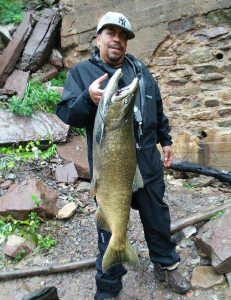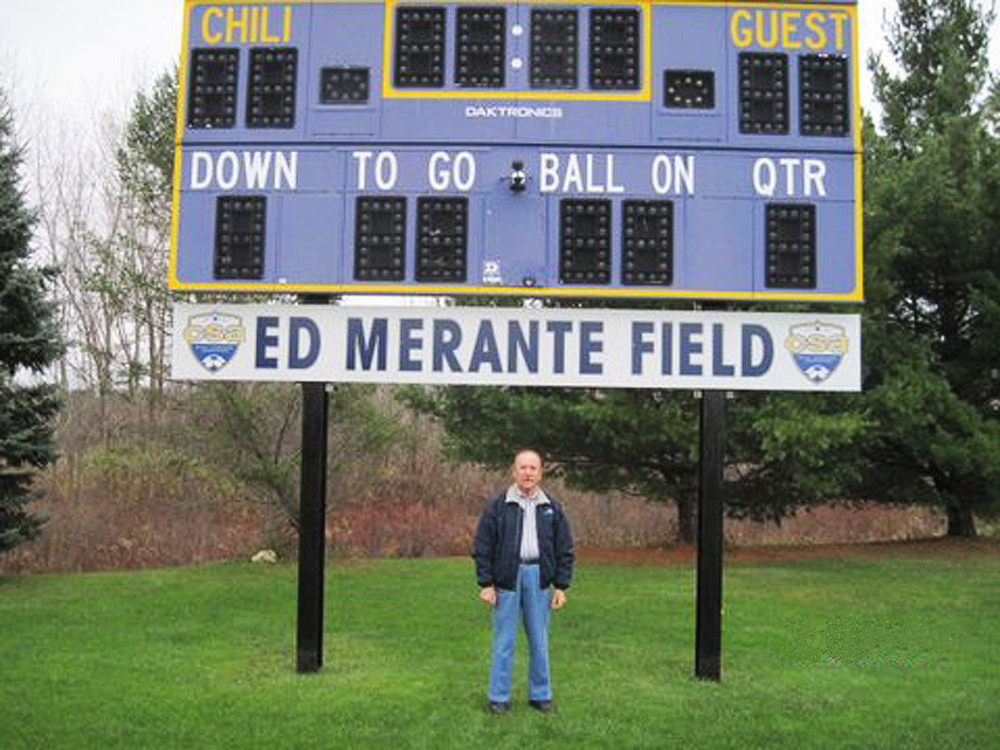The King of September

OK, let’s all say it together … “Where did that summer go?” Wasn’t it just the 4th of July last week or so?
All that being said, there are a few good things about our runaway summer. September is the time of year when shore fishermen here on the south shore of Lake Ontario can tangle with the mighty King Salmon, formally known as the chinook salmon. September is when this coveted big game fish starts to make its run in from the depths of Lake Ontario into the tributaries where they were originally stocked. Here they are accessible to anglers with boots on the ground from the piers in Lake Ontario in September until eventually up those tributaries in October and November. The salmon spend most of their summer out in the middle of our Great Lake where only the dudes with the big boats and thousands of dollars in electronics and equipment onboard can produce them consistently.
At about the time of the Bills opening game, the kings start staging up in the mouth tributaries where the D.E.C. originally stocked them as fingerlings. Kings spawn in the fall, with peak activity occurring from mid-October to mid-November. Although some spawning does occur near river mouths, most spawning takes place in upstream sections of rivers or streams. Adult salmon build nests called “redds” in the stream bottom. The redds are dug by the female in areas of moving water, such as near riffles or at the tail end of pools. The female moves gravel and small rocks with vigorous sweeps of her tail until a depression has been created. The eggs are then deposited and quickly fertilized.
Salmon protect their eggs by burying them in gravel. After spawning, the female moves upstream a short distance and digs into the gravel, freeing it so it will drift downstream and cover the eggs. Buried under layers of gravel, the salmon embryos develop slowly and hatch in late winter or early spring. After hatching, young salmon then move downstream into Lake Ontario.
King salmon can exceed 100 pounds on the Pacific coast; here in New York State, the record fish is a 47-pounder caught in Lake Ontario. Salmon have a limited distribution in New York State and are only found in Lakes Erie and Ontario. Non-natives of New York State, chinooks were first stocked into the Great Lakes in 1873. Although they were sporadically stocked throughout the years, it was not until about 20 years ago that they became abundant. At that time, New York State aggressively stocked kings into Lakes Erie and Ontario to provide a sport fishery. Using the tremendous population of alewives at that time as a food source, the chinooks thrived and produced a spectacular fishery. Since there is not enough suitable spawning and nursery area to naturally produce enough fish, most of the salmon caught in New York State’s Great Lakes are now hatchery-reared.
While adult king salmon spend most of their time in deeper, open water, they will follow prey fish into near shore areas in early spring, late summer or early fall. Sexually mature chinooks stage around the mouths of streams in the fall in preparation for making their spawning runs. September normally marks the arrival of the earliest run of fish into lake tributaries, and peak runs occur in October. Spawning is completed by early November and the adult salmon die shortly thereafter.
Once in the rivers, kings may be taken using a variety of angling techniques. Salmon egg sacs, flashy spoons, or deep diving plugs are effective in the lower river portions; while egg sacs and other egg imitations, including artificial flies, are good in faster upstream water areas. Major Lake Ontario tributaries having kings runs include the Salmon River, Oswego River, Genesee River, Oak Orchard Creek and Eighteen Mile Creek.
As the chinooks begin their migration to spawn, their skin color darkens to a green olive color and eventually will become a dark brown once they are at the dams up the river. When fishing off the piers at the mouth of the tributaries, glow spoons and J-plugs are a good choice. First and last light is usually the best time to cast for salmon and there are even a few hardcore anglers that fish after dark. Be prepared to do a lot of casting and don’t be afraid to change things up: retrieve speed, lure colors. Then as October rolls around the salmon can be caught up the rivers and streams where anglers drift egg sacs for the best results.
If you want to take on the challenge on these fall kings with the help of an expert, you can book a charter captain in the area.
Here is some food for thought. Anglers come from all over the Eastern United States to salmon fish in our own backyard along the south shores of Lake Ontario. Yet many fishermen here still haven’t tried their hand at it. It is comparable to someone living in Orlando, Florida and never visiting Disney World.
We still have some great early fall weather coming our way, so pick one of those classic fall days and go enjoy the bounties of this great salmon fishery we are lucky enough to have right in our very own neighborhood.




